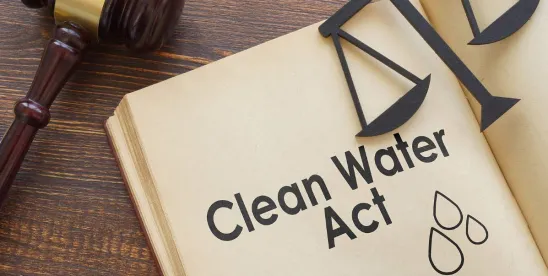Sam Hess of Inside EPA and many others are writing about EPA's Halloween Trick or Treat – the publication of a draft Clean Water Act NPDES General Permit that would apply to “commercial, industrial and institutional” properties with one acre or more of impervious surface in 65 cities and towns in the Massachusetts Charles, Neponset and Mystic River watersheds.
This permit is a “treat” for the NGOs that have twice sued EPA to cause it to take this action. And there can be no doubt that compliance with the permit by the hundreds, if not thousands, of property owners that would be subject to it will dramatically improve water quality in these three rivers. But that doesn't mean that our current Supreme Court would agree that the permit is authorized by the Federal Clean Water Act.
What will the proposed General Permit authorize? The permit authorizes stormwater runoff, snow melt runoff, and surface water runoff from these properties.
What will the property owners who have been involved in this runoff forever need to do to receive this authorization? The property owners will be required to act to achieve a 60 to 65 percent reduction in the concentration of phosphorus in the three rivers identified.
What will be the consequence of not being authorized to continue to discharge stormwater runoff, snow melt runoff or surface water runoff from one of these properties? That's easy. Property owners not compliant with the General Permit will be subject to civil or criminal penalties upon prosecution by EPA or any citizen taking action under the citizen suit provision of the Clean Water Act.
Now if this seems unusual to you that's because it is. In fact, this is the first time EPA has done anything like this anywhere in the United States. Some of you may remember that it was just about two years ago that I wrote about EPA's decision to assert its "residual designation authority" in this way to regulate something already regulated by the State and not the Federal Government in 47 of the other 49 states.
Call me old fashioned, but whether it is the definition of what is a “Water of the United States, or what is a discharge of a pollutant requiring a NPDES permit, I'm for one Federal law applied the same way in all fifty states. And whether the Federal Clean Water Act currently authorizes this sort of regulation of stormwater, snow melt, and surface water is something the Courts will most certainly be asked to tackle.
Of course, EPA will say that the specific conditions in the Charles, Neponset and Mystic Rivers require this unique action. And EPA's Federal Register announcement says that the Clean Water Act “authorize[s] the Agency to regulate stormwater discharges that contribute to a water quality standard violation." Of course every discharge of any “pollutant” “contributes” to water quality standard violations.
In that case an EPA permit prohibited discharges that “cause or contribute to violations of applicable water quality standards." The City and County of San Francisco, fifteen industry groups and a dozen or so water supply and conservation associations complained about the vagueness of that prohibition, and I've predicted that, following its opinion a year and a half ago in Sackett v. EPA, this Supreme Court will, at the very least, remand the San Francisco permit.
For similar reasons, this EPA permit could also eventually find its way to the Supreme Court. Of course the San Francisco case will have been decided long before it is finally issued.
I have one last question. EPA exempted properties owned by the Commonwealth of Massachusetts, the affected municipalities, and the Federal Government from the requirements of the proposed General Permit. At the same time, it asked for comments on whether the owners of Multi-Family Housing Properties should also be covered. If phosphorus in stormwater, snow melt, and surface water is the threat to water quality in these three rivers that EPA says it has determined it is then why isn't it the same threat regardless of the type of property from which it emanates? A cynic might wonder whether the answer to that question has more to do with politics than science.




 />i
/>i

